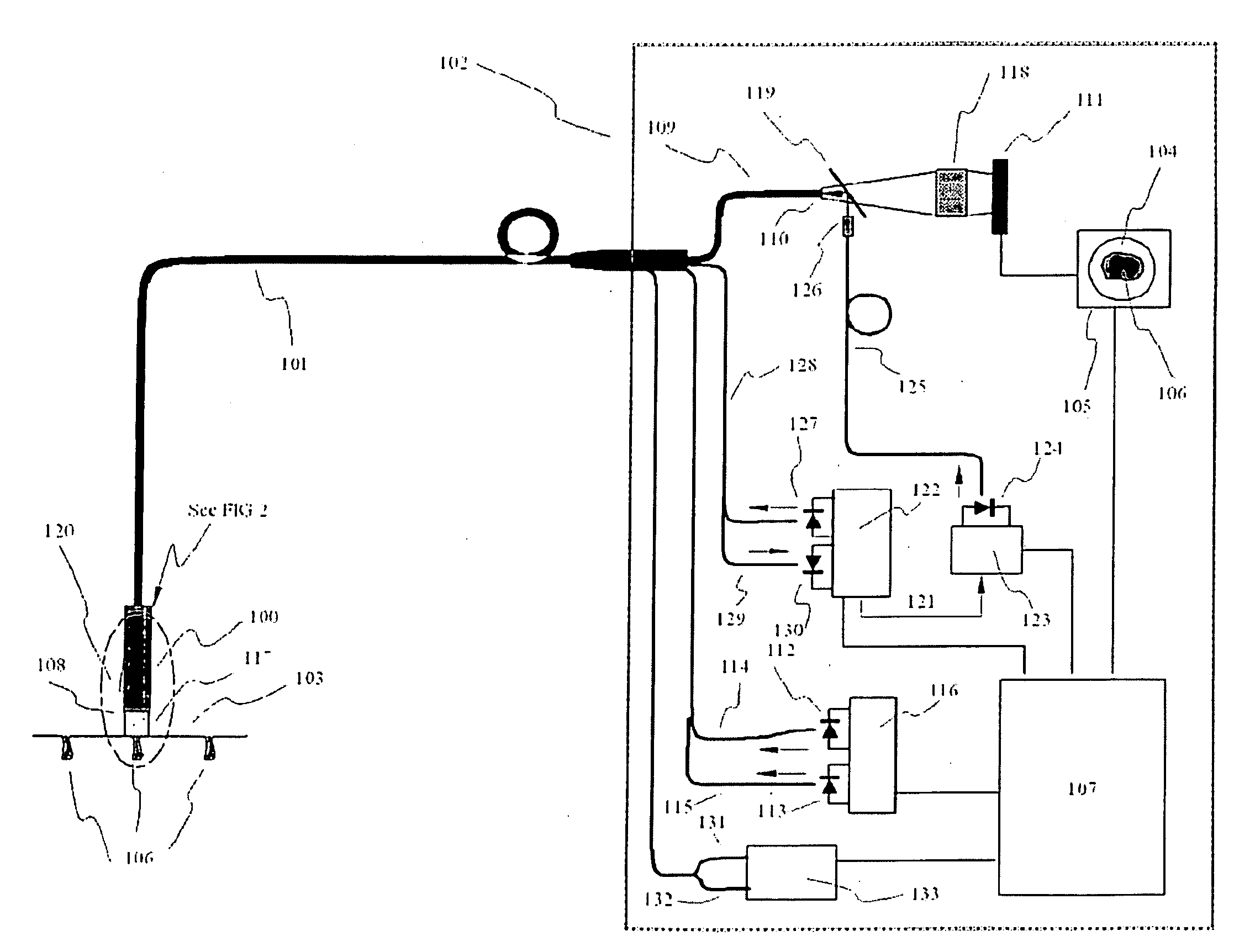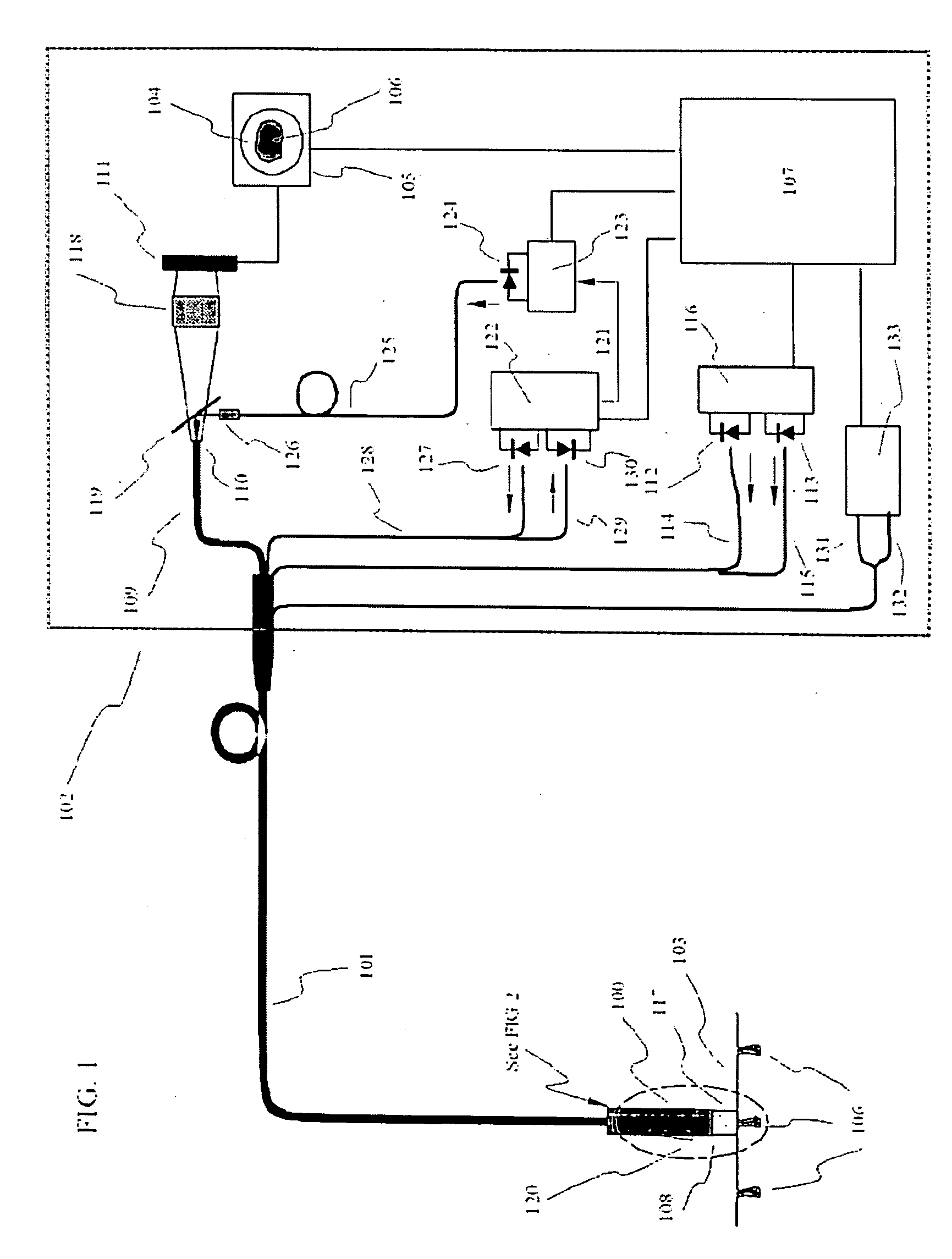Coherent imaging fiber based hair removal device
a hair removal device and coherent imaging technology, applied in the field of coherent imaging fiber based hair removal devices, can solve the problems of cell destruction, very patient dependent parameters, and increase the temperature of tissue, so as to increase the power level of the optical source, and add safety to the home user
- Summary
- Abstract
- Description
- Claims
- Application Information
AI Technical Summary
Benefits of technology
Problems solved by technology
Method used
Image
Examples
Embodiment Construction
[0025]The following detailed description of preferred embodiments of the invention will be made in reference to the accompanying drawings. In describing the invention, explanation about related functions or constructions known in the art are omitted for the sake of clearness in understanding the concept of the invention, to avoid obscuring the invention with unnecessary detail.
[0026]The present invention discloses a portable an inexpensive apparatus for locating and capturing the image of a small treatment area, typically, about 250 microns in diameter. Further more the said imaging hand piece, typically less thin 15 mm in diameter, provides for a means to deliver optical energy from a remote source to the target area, preferably smaller than the image size. The small size the hand piece is particularly useful for treatment areas that require a reduction of the hair density and not indiscriminate hair removal. In a preferred embodiment, the hand piece is mounted on a robotic arm for...
PUM
 Login to View More
Login to View More Abstract
Description
Claims
Application Information
 Login to View More
Login to View More - R&D
- Intellectual Property
- Life Sciences
- Materials
- Tech Scout
- Unparalleled Data Quality
- Higher Quality Content
- 60% Fewer Hallucinations
Browse by: Latest US Patents, China's latest patents, Technical Efficacy Thesaurus, Application Domain, Technology Topic, Popular Technical Reports.
© 2025 PatSnap. All rights reserved.Legal|Privacy policy|Modern Slavery Act Transparency Statement|Sitemap|About US| Contact US: help@patsnap.com



